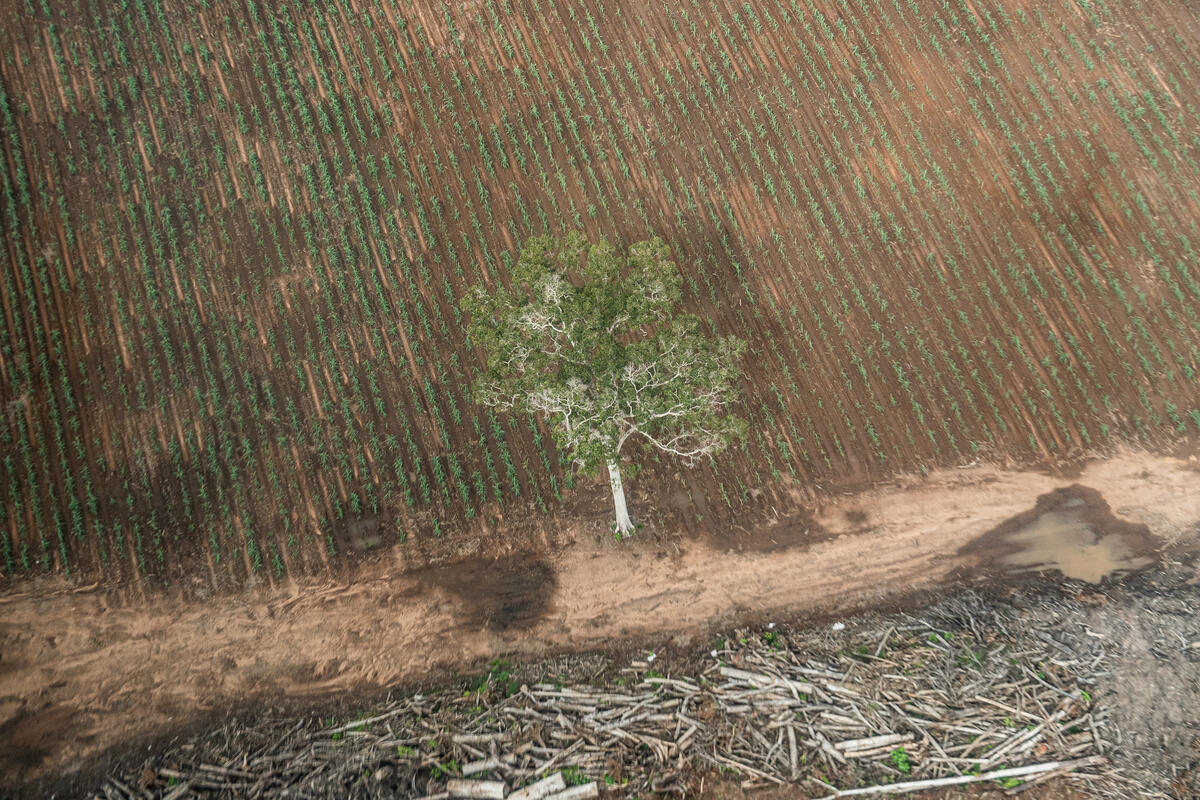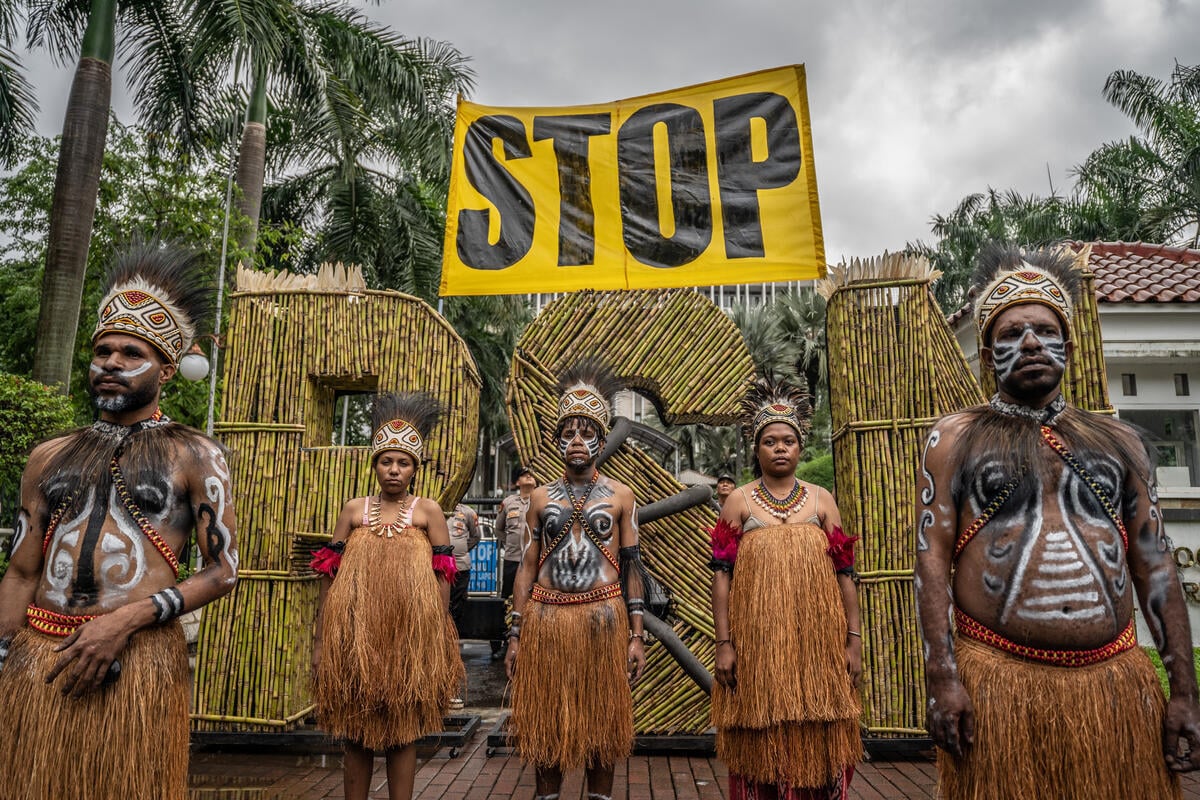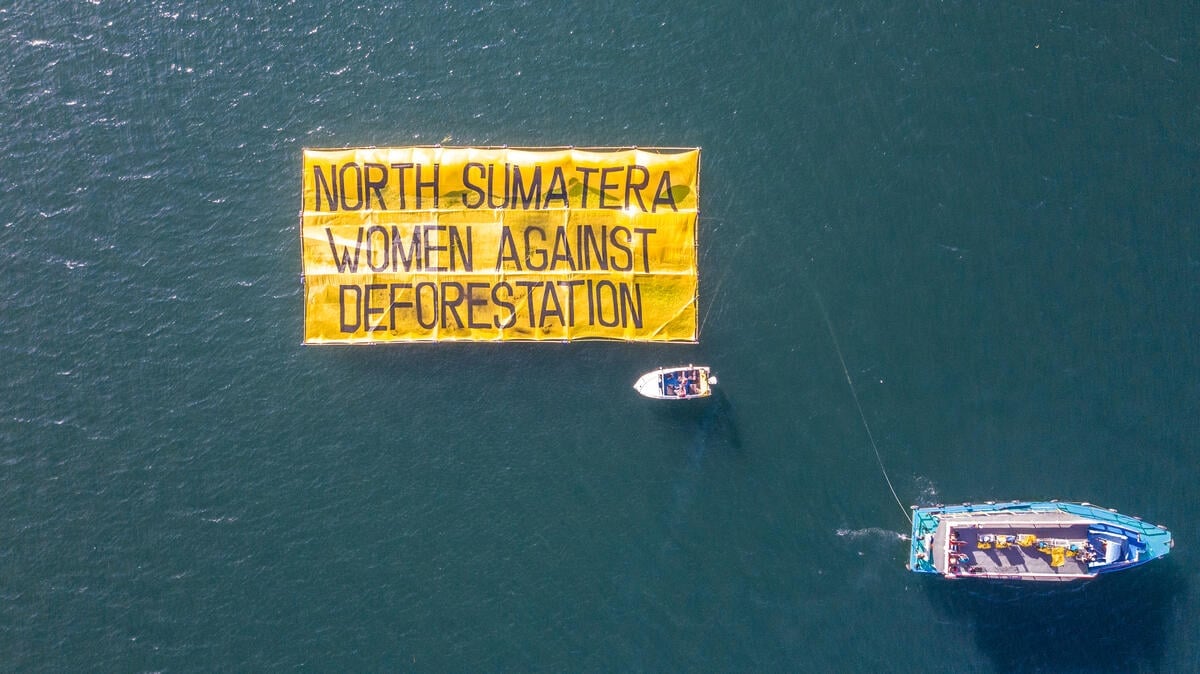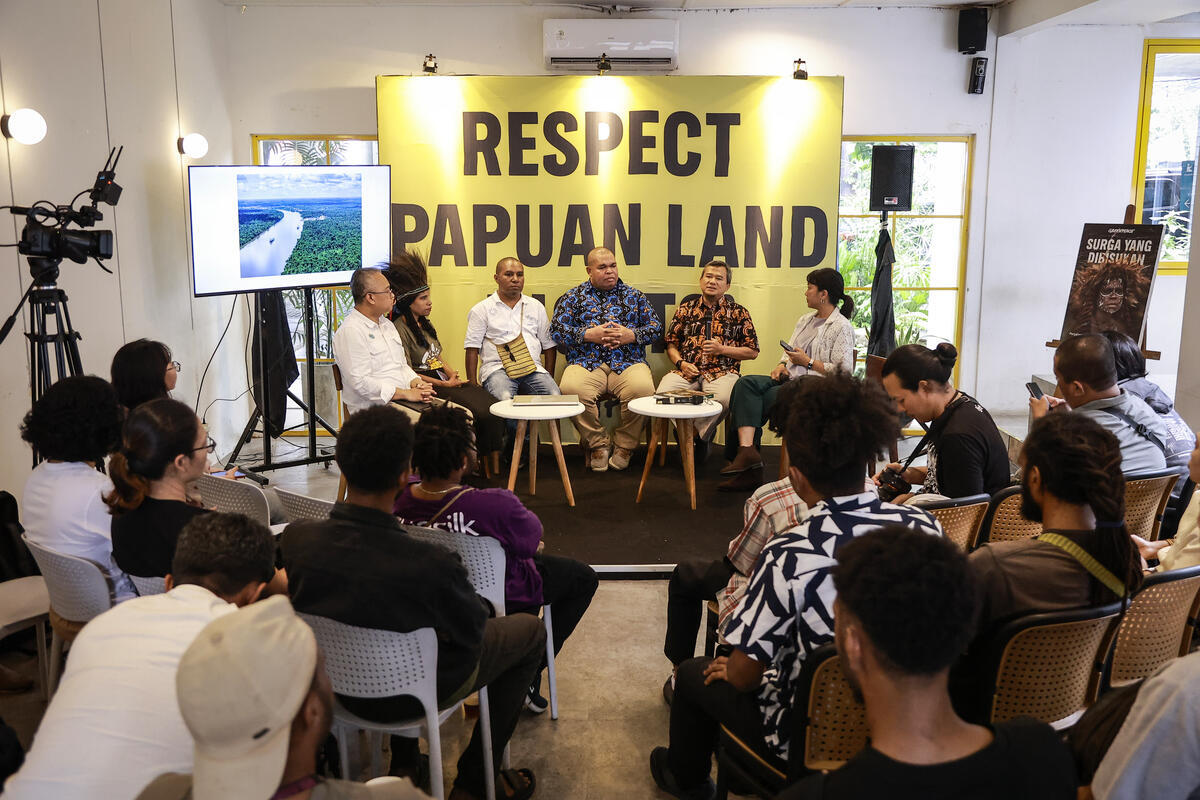
Jakarta, 12 August 2025 – Greenpeace Indonesia has launched a photo book Paradise Silenced at KALA in Kalijaga, South Jakarta. Following International Day of the World’s Indigenous Peoples, the launch provided a joyful space for Indigenous Papuan representatives and the wider public to discuss the past, present, and future of West Papua (or ‘Tanah Papua’ as it is also known).
The discussion featured key speakers including Maria Amote, a young Indigenous woman from the Wambon People; Enrico Kondologit, anthropologist from the University of Papua; Frengki Albert Saa from the government of Southwest Papua Province; and Widhi Handoyo from the Ministry of Environment.
Maria Amote shared her deep concerns as a young Indigenous Papuan. With the threat of environmental destruction escalating, she fears the erosion and eventual disappearance of Papuan Indigenous identities. “My parents did not pass down financial wealth to me; they passed down the forest,” Maria said. “If our customary forests are gone, I can no longer be considered an Indigenous woman. And what then will become of my children and grandchildren?”
During two decades of work in Tanah Papua, Greenpeace has encountered a multitude of stories. Beyond the beauty of its intact natural environment, Greenpeace’s work has borne witness to the incredible resilience of Papua’s Indigenous Peoples. However, the looming threat of destruction, primarily from extractive industries, continues to cast a dark shadow over the land.
“We have watched as Papua’s dearly guarded, intact forests are inexorably threatened by the emergence of a deeply alarming pattern of deforestation,” said Kiki Taufik, Head of Greenpeace Indonesia’s Global Forest Campaign. “Conversely, we have also documented the ways of life of Indigenous Papuans which act to safeguard this natural heritage. Everything in Tanah Papua, this ‘little paradise fallen to Earth,’ could be lost if not fiercely protected. Safeguarding Tanah Papua is a collective responsibility for us all.”
This call for collective action to secure the future of Tanah Papua was echoed by Frengky Albert Saa, Coordinator for Research and Innovation at the Regional Development Planning, Research and Innovation Agency of Southwest Papua Province. “We will join hands with our development partners and civil society organizations like Greenpeace. We must not be averse to collaboration,” Frengky said.
Representing the Ministry of Environment, Director of Environmental Impact Prevention for Regional and Sectoral Policies Widhi Handoyo emphasized the importance of collaborative solutions that protect the environment while fostering the unique strengths of Tanah Papua. He cited the Raja Ampat region, where over 70 percent of the area is designated for environmental protection. “Imagine, given a single region has such a vast protected function, this means that development priorities must be based on the reality on the ground, focusing, for example, on the fisheries and tourism sectors in which lies its primary economic potential,” said Widhi.
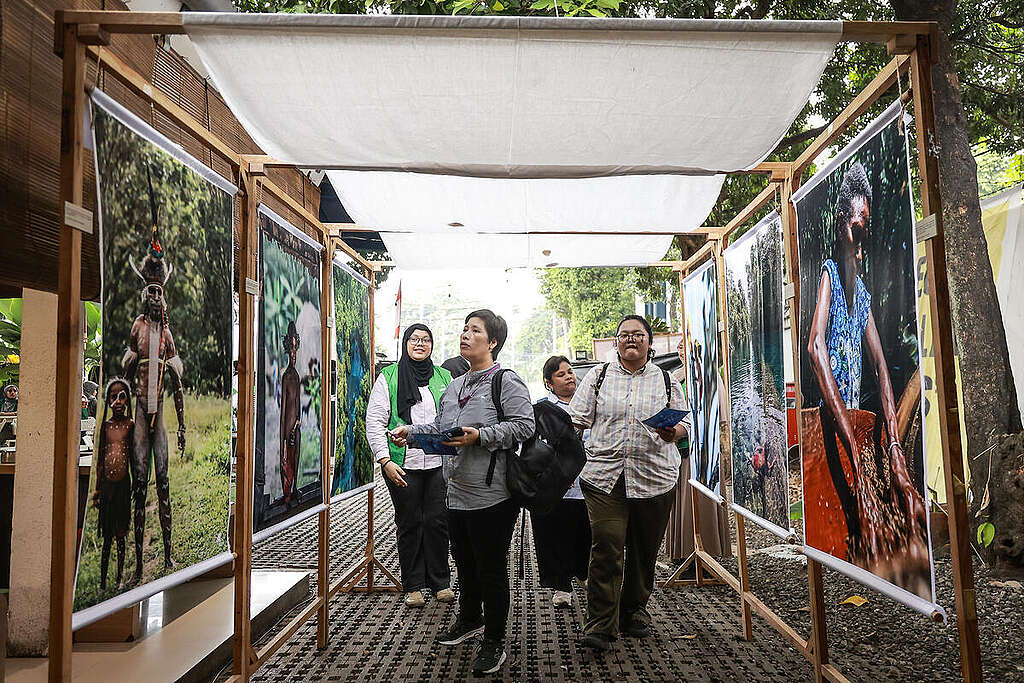
The photo book Paradise Silenced: A Visual Journey Capturing the Resilience of West Papuans is divided into four sections, capturing the multifaceted lives of Indigenous Peoples in Tanah Papua. It journeys from the rich culture and daily lives of Indigenous communities, to visuals of the region’s unique biodiversity, the imminent threats of environmental damage, and documentation of best practices in building solutions for Papua’s future. A selection of photographs was exhibited at the launch event.
As an anthropologist, Enrico Kondologit affirmed the book’s importance not only for those outside Papua but for Papuans themselves. “Visual anthropology, as this photo book aims to undertake, is one way to provide information to the Papuan people, enabling us to take concrete steps for the future of Papua,” he said.
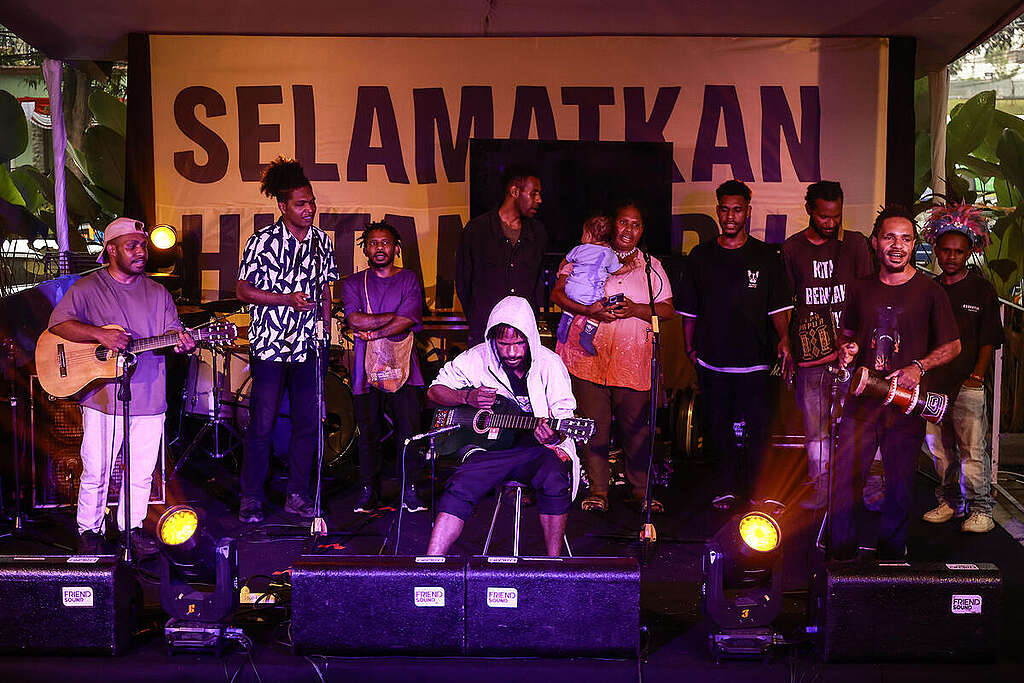
The launch was further enlivened by musical performances from Papuan group Sunrise West Papua (above) and the band Navicula, who performed their new song “Papua,” a tribute to the land and people of Papua (below).
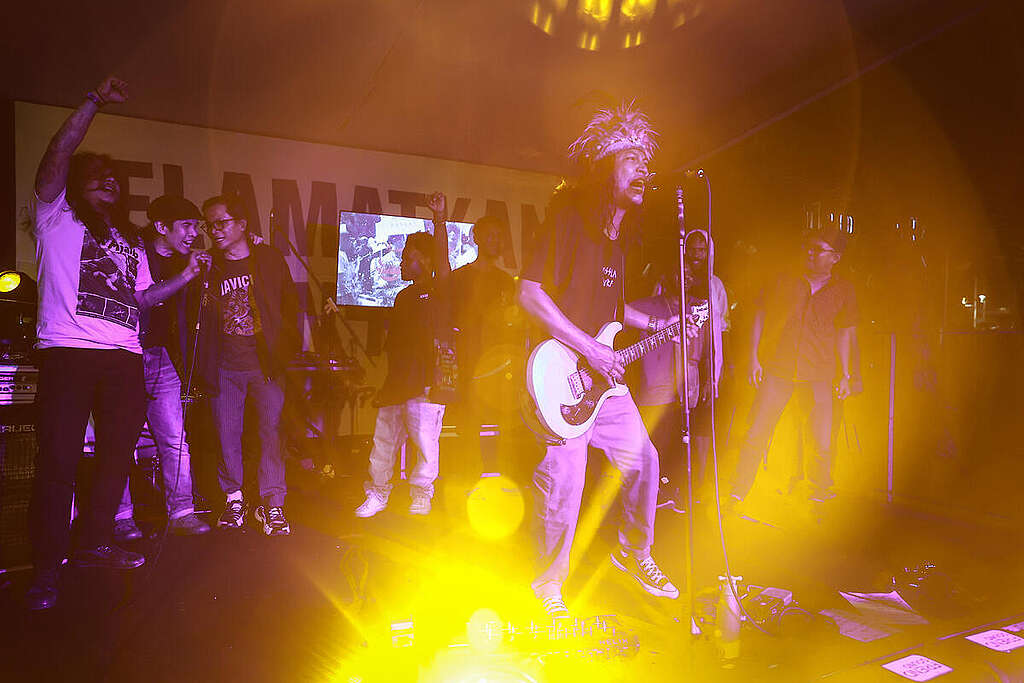
The launch of Paradise Silenced is intended to open new spaces for dialogue about the future of Papua. Sharing her aspirations for Tanah Papua’s future, Maria made a heartfelt plea: “Perhaps the Minister of Environment can see what the rights and hopes of Indigenous Peoples truly are. For us, the forest is our mother. Our identity is born from the land where we grow. We ask the government to see us and to help us.”
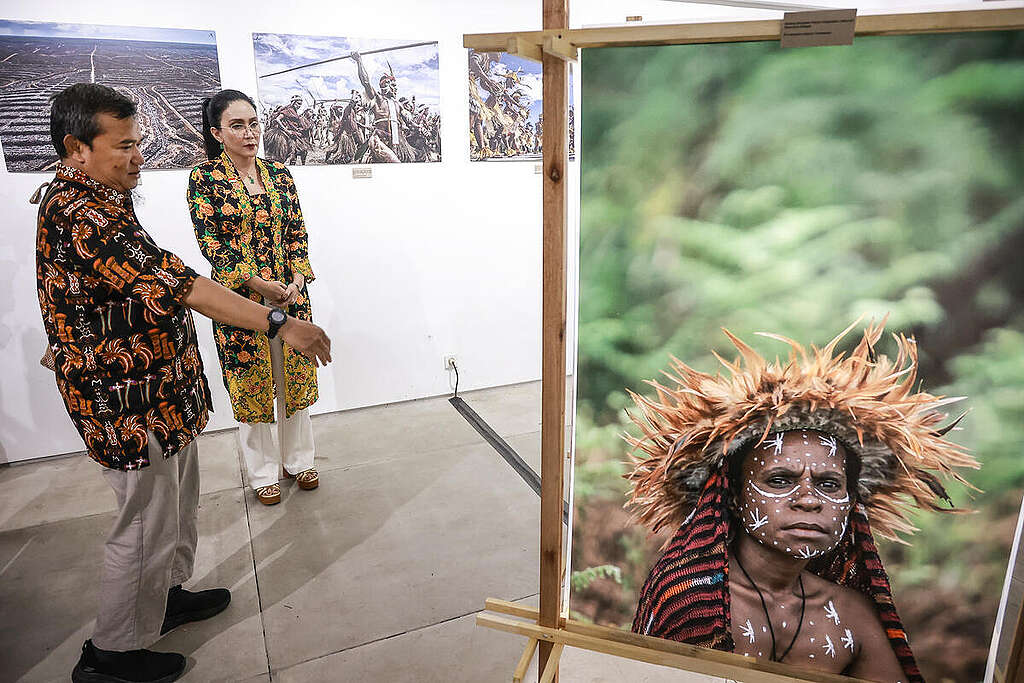
Above: Greenpeace Global Head of Indonesia Forest Campaign, Kiki Taufik (left), and Indonesian House of Representatives member, Rieke Diah Pitaloka tour the “Paradise Silenced” photo exhibition at Kala di Kalijaga, Jakarta, Indonesia. All photos © Dhemas Reviyanto / Greenpeace
Notes to Editors:
- Photos and videos are available to use.
- Paradise Silenced may be read in pdf form (along with the Indonesian version, Surga yang Dibisukan).
Media Contacts:
Amos Sumbung, Greenpeace Indonesia, +62811486327
Igor O’Neill, Greenpeace Indonesia +61414 288 424

